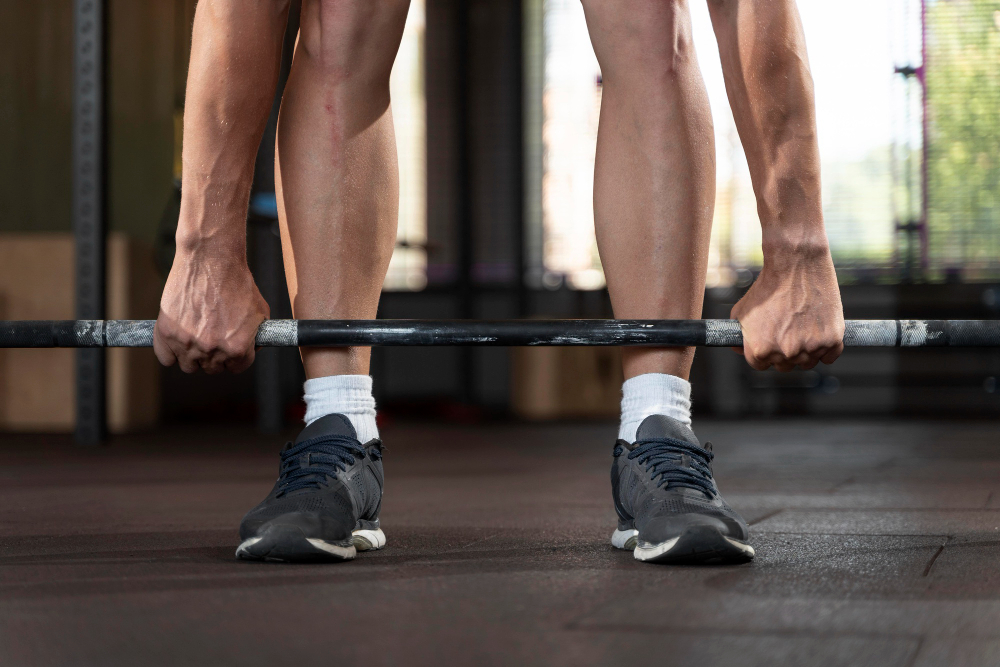Lower Limb Pain When Lifting: Causes, Prevention, and Treatment

Lower limb pain is a common issue that many people experience when lifting weights or performing similar physical activities. Whether you’re moving furniture, working out at the gym, or carrying groceries, experiencing pain in your legs can interfere with your daily life and long-term fitness goals. But what causes lower limb pain, and how can you prevent or treat it?
This blog will help you better understand the possible reasons behind lower limb pain, effective ways to prevent injury, and available treatments to restore your strength and mobility. If you're looking for a Physical therapist in Winter Springs, FL, we've included helpful tips to guide you toward expert care.
Causes of Lower Limb Pain During Lifting
Understanding what might be causing your pain is the first step to finding a solution. Here are some common causes of lower limb pain when lifting.
1. Overuse Injuries
Repeatedly putting strain on your legs without adequate rest can lead to overuse injuries. These injuries typically develop over time, often manifesting as tendonitis, stress fractures, or muscle strain.
For regular gym-goers, poor form during exercises like squats or deadlifts can exacerbate overuse injuries. Without proper mechanics, your legs and joints take on excessive pressure, leading to pain and inflammation.
2. Muscle Imbalances
Weak or tight muscles in your legs can lead to imbalances, increasing the likelihood of pain when lifting. For example:
- Tight hamstrings may pull excessively on your lower back and limit range of motion.
- Weak glutes may shift the burden of lifting to other muscles, such as your quads or lower back, leading to discomfort or strain.
3. Improper Lifting Techniques
One of the most common causes of lower limb pain is incorrect posture and technique when lifting. Bending over incorrectly, using your lower back instead of your legs, or twisting awkwardly can place undue pressure on your legs and knees.
4. Joint or Cartilage Issues
Conditions such as arthritis or cartilage damage in the knees and hips can lead to joint pain when pressure is placed on the lower limbs. High-impact activities or heavy lifting worsens pain in joints that are already compromised.
5. Sciatic Nerve Compression
Sciatica occurs when the sciatic nerve—which runs from your lower back to your legs—is compressed. This can cause shooting pain or tingling in the hips, thighs, and legs, especially during lifting tasks.
Preventing Lower Limb Pain
Pain isn’t inevitable when lifting. By making a few adjustments, you can protect your legs and lower body from unnecessary strain.
1. Focus on Proper Form
Whether you’re lifting a barbell at the gym or picking up something heavy at home, always focus on proper lifting techniques:
- Keep a straight back and bend at the hips and knees.
- Engage your core muscles to provide stability.
- Lift with your legs and avoid straining your lower back.
If you’re unsure about your lifting form, consider working with a trainer or a physical therapist for guidance.
2. Strengthen and Stretch Your Muscles
Building a strong lower body is key to avoiding pain. Incorporate exercises that target your:
- Glutes (hip bridges, squats)
- Hamstrings (Romanian deadlifts)
- Calves (heel raises)
Equally important is flexibility. Regular stretching—focusing on the hamstrings, calves, and hip flexors—will prevent tightening and strengthen your range of motion.
3. Wear Supportive Footwear
Your choice of footwear can impact how your legs handle lifting tasks. Invest in shoes that offer sufficient arch support, cushioning, and stability to help distribute weight evenly across your lower body.
4. Warm Up Before Activity
Don’t skip your warm-ups! Dynamic stretches or light cardiovascular movements prepare your muscles for exertion and minimize injury risks.
5. Take Breaks and Rest
If you participate in frequent lifting or physical activities, balance it out with adequate rest days for recovery. Overworking your body without recovery leads to fatigue and increases injury risk.
Treating Lower Limb Pain
If you’re already experiencing chronic or acute lower limb pain, it’s vital to address the issue before it worsens. Here are some effective methods for managing and treating lower limb pain.
1. Consult a Physical Therapist
A licensed Physical therapist in Winter Springs, FL, can assess your condition and develop a personalized treatment plan. Physical therapy typically includes exercises to strengthen weakened muscles, improve flexibility, and correct improper movement patterns.
At B Physical Therapy, we specialize in helping individuals recover from lower limb pain and build strength to prevent future injuries.
2. Hot and Cold Therapy
If you’re dealing with swelling or muscle strain, alternating between hot and cold packs can provide relief:
- Ice reduces inflammation and numbs the affected area.
- Heat improves blood flow and relaxes tightened or sore muscles.
3. Medication
Over-the-counter anti-inflammatory medications like ibuprofen may provide temporary relief from pain or swelling, but it’s essential to consult a healthcare professional for persistent discomfort.
4. Corrective Exercises
Targeted strengthening and stretching exercises are vital to restoring proper function. A physical therapist may recommend:
- Clamshells to strengthen the glutes.
- Leg raises to engage the quadriceps and hip flexors.
- Seated hamstring stretches to improve flexibility.
5. Seek Professional Guidance
Chronic pain or recurrent discomfort may require further evaluation, such as imaging tests or consultations with orthopedic specialists, to rule out conditions like arthritis or nerve compression.
Take the First Step Toward Pain-Free Movement
Lower limb pain doesn’t have to hold you back. By identifying the possible causes, implementing preventative measures, and seeking effective treatment, you can restore mobility, reduce pain, and return to the activities you love.
Looking to jump-start your recovery? At B Physical Therapy, our team is committed to helping you achieve your goals pain-free. We offer personalized care tailored to your specific needs, so you can move better, feel stronger, and live healthier.
If you're searching for a Physical therapist in Winter Springs, FL, contact us today to schedule your appointment. Together, we’ll create a plan to get you back to the things that matter most.